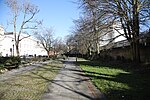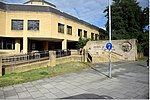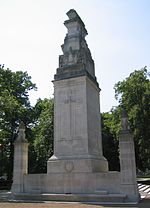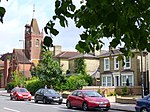St Edmund's Church, Southampton
19th-century Roman Catholic church buildings in the United KingdomGothic Revival architecture in HampshireGothic Revival church buildings in EnglandGrade II listed Roman Catholic churches in EnglandGrade II listed churches in Hampshire ... and 3 more
Roman Catholic churches completed in 1889Roman Catholic churches in HampshireRoman Catholic churches in Southampton

St Edmund's Church is a Roman Catholic parish church in Southampton, Hampshire. It is situated on the corner of The Avenue and Rockstone Place. It was built in 1889 and is a Grade II listed building.
Excerpt from the Wikipedia article St Edmund's Church, Southampton (License: CC BY-SA 3.0, Authors, Images).St Edmund's Church, Southampton
The Avenue, Southampton Bevois Town
Geographical coordinates (GPS) Address External links Nearby Places Show on map
Geographical coordinates (GPS)
| Latitude | Longitude |
|---|---|
| N 50.915 ° | E -1.4031 ° |
Address
St Edmund's Catholic Church
The Avenue
SO17 1EY Southampton, Bevois Town
England, United Kingdom
Open on Google Maps









